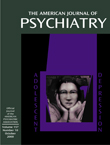This book focuses on the delivery of psychiatric care in the home and related community systems rather than on the hospitalization-partial hospitalization-outpatient system. The editor suggests, and I agree, that it should be of particular interest to the clinician “who has not worked with enduring psychiatric conditions” or “whose experience has been predominantly in short term settings” or “who has worked in Community psychiatry” and now needs advice on the context of managed care, or the entrepreneurial health care executive who is looking for “new services to offer payers.”
Psychiatric home care is not new, as those who remember family care in Geel, Belgium, starting in the year 1250
(1), or the 1962 home treatment visit study in the Boston State Hospital catchment area
(2), and as any other serious participant in or proponent of community psychiatry can attest. The book proposes that a current resurgence in emphasis on psychiatric home care is being fostered by the National Alliance for the Mentally Ill, the Americans With Disabilities Act, the clinical effects of neuroleptic drugs, and the attempt by the new economic agents (managed care organizations and health maintenance organizations) to minimize costly inpatient stays.
The ingredients of home-based care, described as “still evolving,” include “crisis management, direct therapeutic treatment, medication management, support of treatment compliance and activities of daily living, advocacy.” This list represents a “fluid set of interventions” that could be described as assertive management and reads like descriptions of the therapeutic milieu in partial hospitalization settings of the 1960s, now applied to the home-community setting.
Ten chapters written by 12 authors (eight social workers, three psychologists, and one physician) focus on issues such as patient transition from inpatient to home care, advantages and dangers of home care, stress on the family when services are too thin, contrast of office-based and home-based treatment, effectiveness of engaging families, the use of paraprofessionals to limit costs, and reimbursement models, including capitation.
Although the introduction mentions that interventions in this book are relevant to patients with schizophrenia, bipolar disorder, and, possibly, schizoaffective or borderline personality disorders, there is no systematic mention of these diagnoses in the ensuing chapters. An exception is the description of the collaboration of social worker and psychiatrist in sustaining supportive treatment through a patient’s course of psychosis, hospitalization, home-based community treatment, medication (with clozapine), and job training.
Although some chapters have a “manual-like” quality to the writing style, the chapter that describes the role of family support groups in emancipating families from a “hospital at home” to a less guilt-ridden state in which the mentally ill family member moves to a supportive apartment and other elements of community living is an engaging exception. There is little other attempt to theorize regarding the effect of the different community or home delivery treatment systems on individual patient psychodynamics, much less any effect on the neuroreceptor system of an individual patient’s nervous system. However, there are allusions to outcome studies in chapter 5, where controlled measures of clinical, cost, and patient satisfaction are mentioned. Patients prefer the home locus, and substantial sustained psychiatric home care does decrease the need for rehospitalization compared with standard inpatient/partial hospitalization/outpatient treatment. The cost over time for sicker patients is the same in either locus of care.

